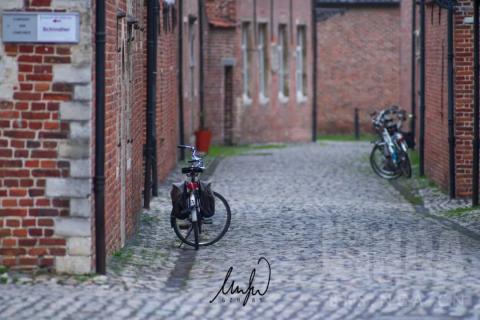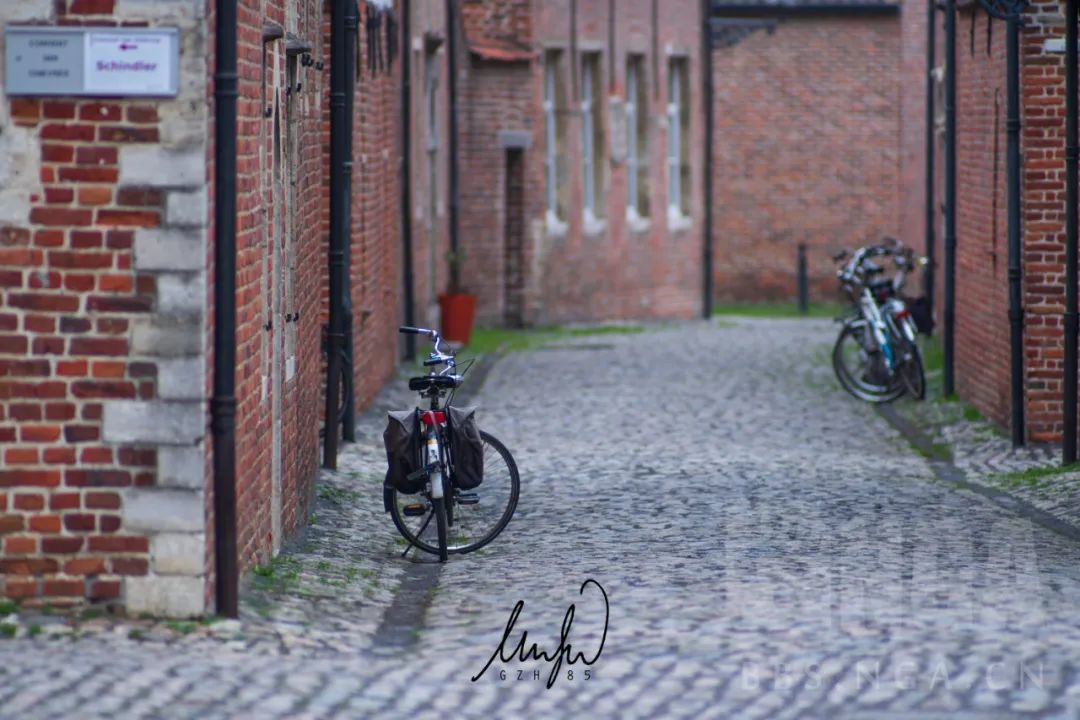
So let’s start with some photos taken while wandering around Belgium, and we may also update some photos taken in other places later. Because I live in the German-Belgian border area, and I happen to know a friend who is studying in Belgium and lives in Leuven, so I often take the two-hour train there to visit him. When I was in Belgium, I stayed at his house.
Because I live in the German-Belgian border area, and I happen to know a friend who is studying in Belgium and lives in Leuven, so I often take the two-hour train there to visit him. When I was in Belgium, I stayed at his house.
His residence is in the Grand Beguinage in Leuven, which was originally a monastery and is now owned by the University of Leuven. It is mainly a residence for faculty, staff and students. This monastery has a long history (the house he lives in was built in 1662, the year is engraved on the outer wall, I forgot to take a photo)

Churches can be seen everywhere in Europe, and there is a church next to the residence called Sint Jan de Doperkerk. The church is not very big, but it is not small either. It feels like it can be called a Cathedral. The bell tower chimes every half hour (of course not at night), and music is played on important holidays.

In the Great Beguan Monastery, paving stones with the word "R" engraved on them can be seen everywhere, but we didn't understand what they meant.

In Leuven, the University of Leuven with a history of nearly 600 years must be the most important part of the city. On the streets, buildings with university logos can be seen everywhere. Some are school teaching and administrative facilities, and some are student apartments. In short, the university has become integrated with the city.


The library of the University of Leuven was burned down twice during the two world wars. More than one million volumes of books were reduced to ashes, causing serious damage to the school.

In the square next to the city hall, you can see such a sculptural fountain: a little man holds a book in his left hand and pours water on his head from a cup with his right hand. At first glance, it looks like water is pouring into his brain, but it actually symbolizes knowledge pouring into his head like flowing water. This sculpture was erected in 1975 to commemorate the 550th anniversary of the university's founding. Like the Manneken Pis in Brussels, he also wears different clothes during some festivals. Unfortunately, the timing was unlucky and I wasn't able to take a photo.

There is a castle south of Leuven called Arenberg. It was built in 1515 and was originally owned by the Allenberg family. It is now the main building of the School of Engineering of the University of Leuven. The School of Engineering, Allenberg Campus and some scientific research centers are also near the castle.

(The photos are panoramic stitching, using an old Schneider lens. I am not skilled enough to correct the vignetting, resulting in uneven brightness at the seams in the sky)
There is a pond in front of the castle, where many geese and ducks live.


The second time I came to Leuven was on Christmas Eve, December 14th was here————, and candles were lit along the road in the Grand Beguinage.



There are also special events in the church. The formerly quiet and sacred church became lively with the sound of piano, organ and singing.



The fourth time I came to Leuven was during the Spring Festival this year (2020), when the COVID-19 epidemic had begun to spread in Europe. I had a New Year’s Eve dinner at a friend’s house with several Chinese students and teachers from the Confucius Institute, and it felt particularly warm.

Leaving Leuven, you can reach Brussels by train in ten minutes. We got off the bus directly from Schumann station and arrived at the heart of the European Union: The European Commission.

There was also an LGBT sidewalk in the square in front of the building, but it seems to be gone now.

Not far ahead, you can see friendly and familiar Chinese people on the street where French is everywhere. There must be big bosses here.

Continuing forward, we reach the 50th Anniversary Park. In 1880, in order to commemorate the 50th anniversary of Belgium's independence, the government built this square, so it was named Cinquantenaire Park. The gate in the picture is also called the Arc de Triomphe and was built in 1905. The buildings to the left and right of the arch are the "Royal Museum of Armed Forces and Military History" and the "Royal Museum of Art and History", together with the latter there is a car museum.

Due to time constraints, I only visited the Military Museum. The British tank during World War I had a unique and classic shape and appeared in many World War I movies.

A retired F-16 fighter jet of the Belgian Air Force (should be F-16A). It was the first time I saw a real F-16. It was much smaller than expected. After all, it was light combat, but it was still quite handsome.

Walking towards the city center, you can see a cathedral called "St. Michael and St. Gudula Cathedral". The archbishop of this diocese is in this church, and national religious ceremonies such as the Belgian royal wedding and state funeral are also held here.

In the Grand Place of Brussels in the city center, there is a very unique cafe - the White Swan Cafe. It was here that Mr. Karl Marx completed the Communist Manifesto.


Iconic Attraction: The Manneken Pis. It's a pity that I haven't put on my Christmas clothes yet.

One last photo, next to a pillar on the underground floor of Brussels Central Station. Three years ago, on the afternoon of June 20, 2017, a handbag bomb exploded here (under the trash can, which did not exist at the time). At that time, my friend was only ten meters away from the bomb. When he saw the fire, he was so frightened that he ran out. Fortunately, the briefcase bomb did not produce fragments, but it was quite scary and did not cause any casualties.
(over)
